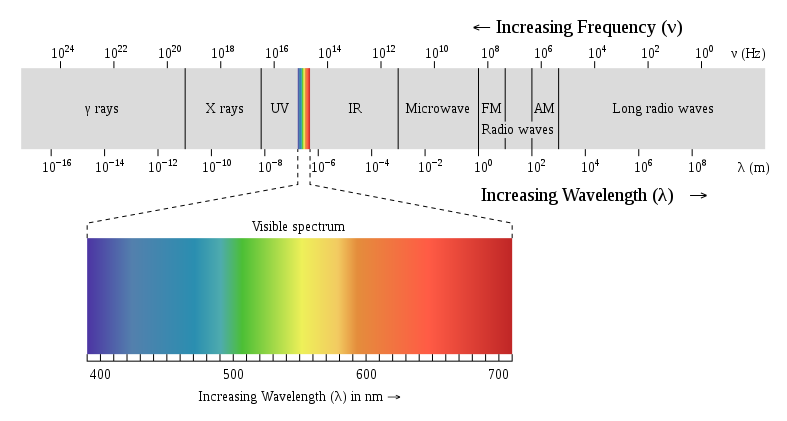
Which of the following is not an electromagnetic wave?
A) Light Rays
B) X-Rays
C) Alpha Rays
D) Gamma Rays
Answer
218.1k+ views
Hint: Remember the electromagnetic areas and aim to deduce which of the above alternatives does not belong to the spectrum. Think on how and when the rays appear as they are released.
Complete step by step solution:
Electromagnetic waves are also called EM waves, which come into contact with the magnetic field as the electric field comes into contact. The composition of oscillating electrical and magnetic fields may also be assumed to be electromagnetic waves. Electromagnetic waves are solutions to Maxwell's equations, which are the simplest electrodynamics equations.
Electromagnetic waves can be categorised by their varying wavelengths / frequencies and arranged as an electromagnetic continuum. The table below tells us this set consists of some kind of electromagnetic radiation in our world.

If we can see, only a small percentage of the various forms of radiation exist within the visible range, that is, light that is visible through the eyes. In the right side of the visible spectrum, the sources of radiation are less commonly (and thus more frequently in wavelength) than visible light. We include UV, X-rays and gamma-rays on the left half of the visible spectrum. Owing to their incredibly high frequencies, these forms of radiation damage living species.
The waveform is better viewed as random for some types of EM waves and then a spectral analysis has to be conducted using somewhat different statistical techniques suited to the random or stochastic processes. In such cases, their power content is represented by each frequency variable and phase information is not retained. The power spectral density of a random process is considered such a representation.
The correct option is (C).
Note: The behaviour and relationship of EM radiation to matter is dependent on its frequency and qualitatively varies as the frequency increases. Lower frequencies have longer wavelengths, higher frequencies have shorter wavelengths, and photons of higher energies are associated with them.
Complete step by step solution:
Electromagnetic waves are also called EM waves, which come into contact with the magnetic field as the electric field comes into contact. The composition of oscillating electrical and magnetic fields may also be assumed to be electromagnetic waves. Electromagnetic waves are solutions to Maxwell's equations, which are the simplest electrodynamics equations.
Electromagnetic waves can be categorised by their varying wavelengths / frequencies and arranged as an electromagnetic continuum. The table below tells us this set consists of some kind of electromagnetic radiation in our world.

If we can see, only a small percentage of the various forms of radiation exist within the visible range, that is, light that is visible through the eyes. In the right side of the visible spectrum, the sources of radiation are less commonly (and thus more frequently in wavelength) than visible light. We include UV, X-rays and gamma-rays on the left half of the visible spectrum. Owing to their incredibly high frequencies, these forms of radiation damage living species.
The waveform is better viewed as random for some types of EM waves and then a spectral analysis has to be conducted using somewhat different statistical techniques suited to the random or stochastic processes. In such cases, their power content is represented by each frequency variable and phase information is not retained. The power spectral density of a random process is considered such a representation.
The correct option is (C).
Note: The behaviour and relationship of EM radiation to matter is dependent on its frequency and qualitatively varies as the frequency increases. Lower frequencies have longer wavelengths, higher frequencies have shorter wavelengths, and photons of higher energies are associated with them.
Recently Updated Pages
Elastic Collision in Two Dimensions Explained Simply

Elastic Collisions in One Dimension Explained

Electric Field of Infinite Line Charge and Cylinders Explained

Electric Flux and Area Vector Explained Simply

Electric Field of a Charged Spherical Shell Explained

Electricity and Magnetism Explained: Key Concepts & Applications

Trending doubts
JEE Main 2026: Application Form Open, Exam Dates, Syllabus, Eligibility & Question Papers

Derivation of Equation of Trajectory Explained for Students

Hybridisation in Chemistry – Concept, Types & Applications

Understanding the Angle of Deviation in a Prism

Understanding Collisions: Types and Examples for Students

How to Convert a Galvanometer into an Ammeter or Voltmeter

Other Pages
JEE Advanced Marks vs Ranks 2025: Understanding Category-wise Qualifying Marks and Previous Year Cut-offs

Understanding Atomic Structure for Beginners

Ideal and Non-Ideal Solutions Explained for Class 12 Chemistry

Degree of Dissociation: Meaning, Formula, Calculation & Uses

Understanding Electromagnetic Waves and Their Importance

Understanding the Electric Field of a Uniformly Charged Ring




